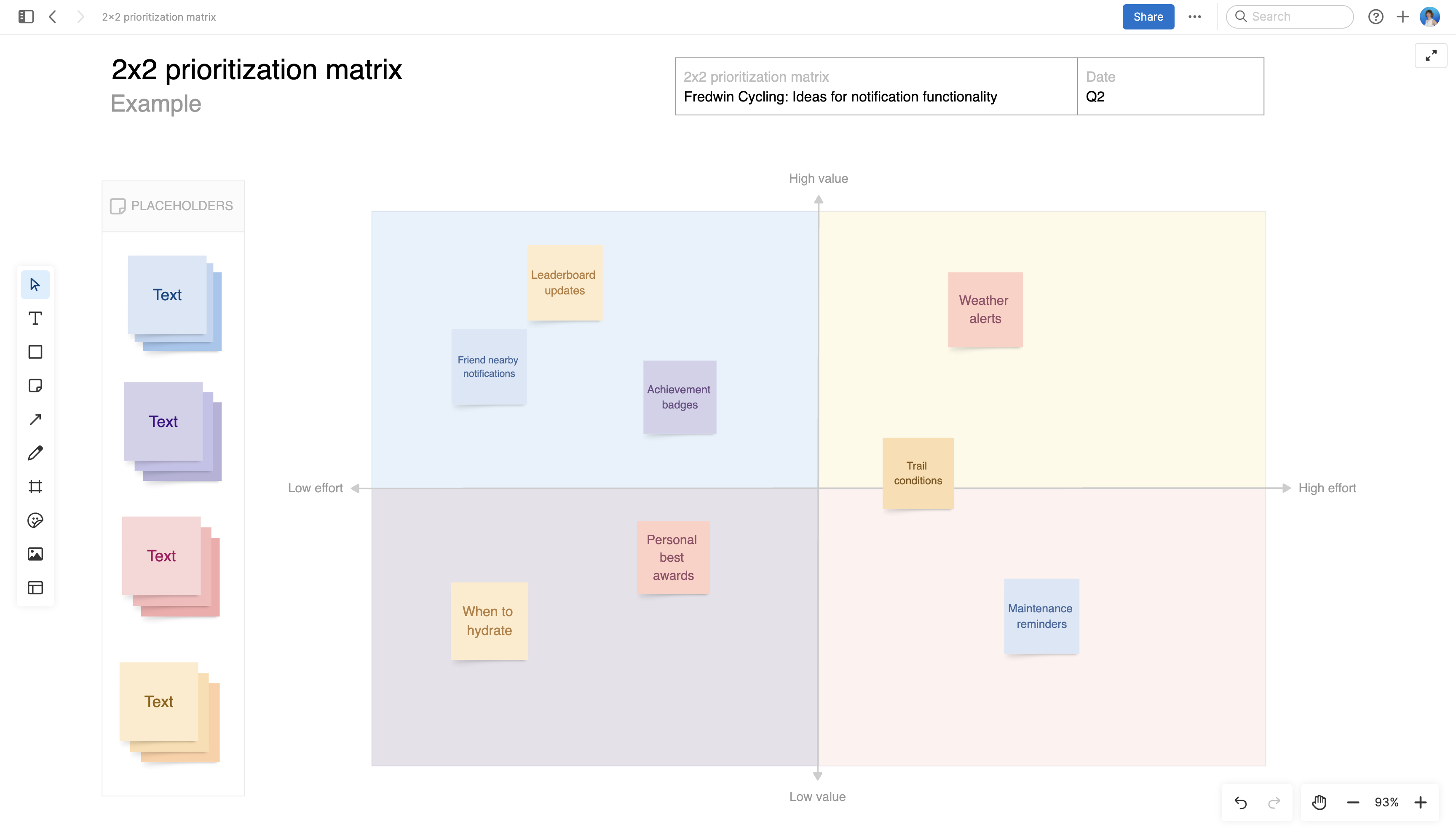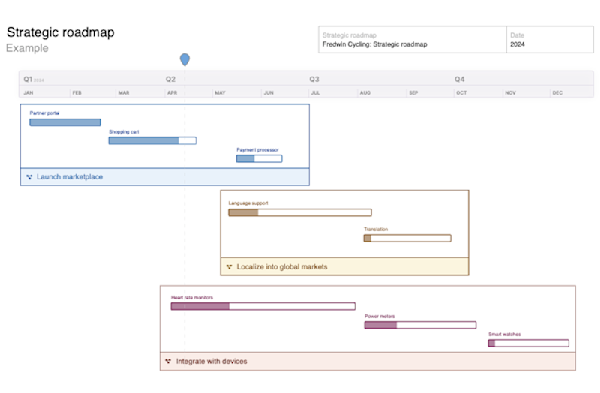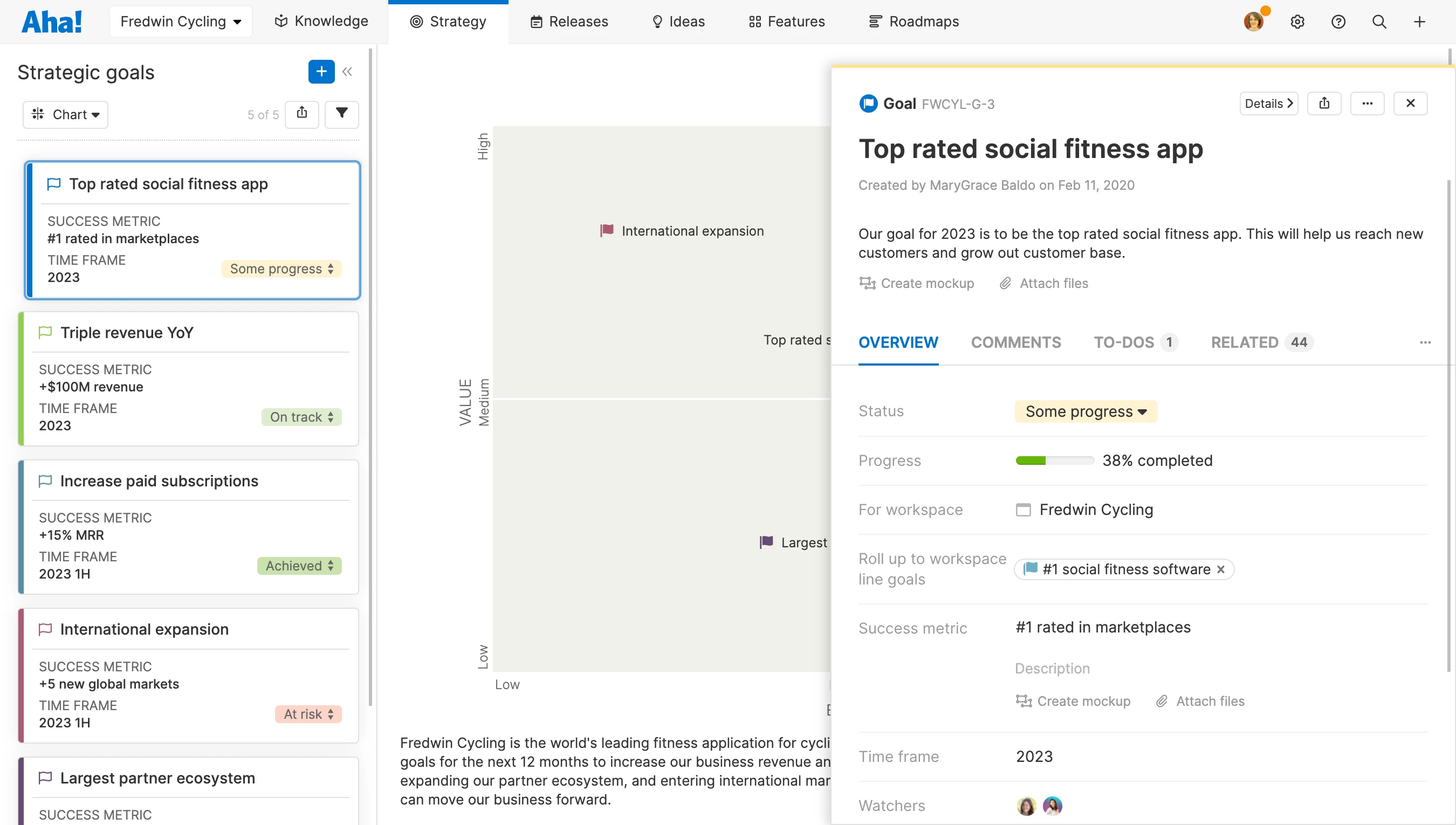4 steps to better product ideation and feature ideas
Last updated: March 2025
It is very rare for a product manager to bring forth the breakthrough idea alone. Innovation requires a broad range of inputs and intense focus. This is especially true for established offerings. Product managers juggle ideas from customers, salespeople, leadership, and other stakeholders.
Agile product ideation is an iterative approach to refining ideas and generating new ones with your team. It involves gathering feedback from multiple sources, rapidly exploring new concepts, and closely collaborating to prioritize work that delivers more value. When done well, agile product ideation can help you drive continuous innovation and gain (or maintain) market leadership.
This is why it is essential for mature product organizations to develop an idea management process that supports your strategy and encourages innovation.
Encourage innovation and discover trends with Aha! Ideas — free for 30 days.
A well-defined process allows stakeholders to submit great ideas and build on ideas submitted by others. So if you want to excel as a product manager, deliver value to customers, and drive business growth — make it easy to share ideas.
Let's get started:
1. Define your goals
Brilliant ideas can come from anywhere. But you need to understand which ones will make a real impact. Without an underlying product strategy, the onslaught of ideas and requests for enhancements can lead to a disjointed product. You want to avoid investing time and resources into halfhearted features that will not solve real customer needs.
This is why understanding what you are trying to accomplish is essential. The most effective product goals align directly with the direction of the company. Time-bound, measurable goals with defined success metrics ensure ideas are focused and relevant. Common goals include specific revenue growth and acquiring new customers. Depending on your industry and product, you may have goals related to international expansion or achieving a certain marketplace rating compared to other similar products.
2. Establish product initiatives
Many teams try to do too many things at the same time. Setting initiatives is a key way to help you strategize which types of improvements and ideas you should concentrate on. A product initiative is a set of product features that connect to a single area.
For example, if your goal is to acquire new users, you might develop an initiative around conversion rate optimization. If your goal is to increase users by 15 percent, you need to create an initiative that addresses acquisition.
3. Crowdsource new ideas
Once you have your initiatives set, you are ready to start crowdsourcing. What could you build right now to serve your goals and initiatives and to create the most value for your customers? Open it up to the broader team — cross-functional colleagues, partners, and customers too.
Look at customer feedback
What are your customers telling you? What are their likes and dislikes? Where are they getting stuck? Where can you improve their customer experience?
If you have an established product, chances are your customers are already giving you feedback on social media or via support tickets. Maybe you collect feedback formally in an ideas portal or in-app feedback widget. Spend time reviewing ideas to identify commonalities. Even better, schedule time to speak with power users 1:1.
Deep insights will follow when you take the time to truly understand your users. But remember that vocal customers tend to be the minority. What about all the quiet customers — what are they not telling you?
Talk to your team
Sit down with your sales and support teams to find out what they hear from customers. What are the most common frustrations? What features or benefits really impress buyers? Doing this on a regular basis ensures that you stay close to your customers. It also helps you build strong relationships with teammates — who become your partners in the successful launch of new product functionality.
Analyze data
There are hundreds of different metrics you could potentially track but not all will lead to meaningful product ideas. You need to focus on the key performance indicators (KPIs) that demonstrate where users are successfully — and unsuccessfully — interacting with your product.
Data alone is not enough. Combine the data trends you are seeing with what you are hearing from customers by documenting both in a central location. This will give you a more holistic picture of where your product should be delivering more.
Research competitors
Buyers today evaluate multiple products as they look for a solution. It is important that you understand what other solutions offer that you do not. When possible, demo the alternative solutions to your products. What are others doing more effectively than you? What additional needs do those products fill?
Do not limit your research to only direct competitors. High-performing organizations in adjacent industries can be sources of valuable ideas as well. Is there a registration flow that is particularly streamlined? Or an onboarding process that is highly effective? How can those insights be adapted to fit your product?
This ideas overview panel is available in Aha! Ideas. Teams looking for an all-in-one product development software can also opt for Aha! Roadmaps, which includes much of the basic functionality available in Aha! Ideas.
4. Prioritize the ideas
At this point, you should have a stable of data-driven ideas mapped to initiatives and goals. The next step is to prioritize according to impact and value. Use a consistent scoring mechanism based on your product strategy to evaluate ideas against the same criteria — make it high-level so scoring can be done quickly.
Mature product teams use purpose-built idea management software to collect, prioritize, and manage ideas in a central location. If you want to get started quickly, you can also use the digital whiteboarding tool in Aha! software. It comes with collaborative prioritization templates such as the 2x2 matrix. A simple matrix like this helps you to weigh the estimated value of a new idea versus the effort required to build it — so you can easily decide what comes next and why. Try it for yourself.
Related:





